calsfoundation@cals.org
Little Rock Zoo
The Little Rock Zoo is Arkansas’s only public zoo. Since its beginning, the zoo has grown and become a major attraction in Little Rock (Pulaski County).
Oral histories long after the fact claimed that the zoo began in 1926, with only an abandoned timber wolf and a brown bear. However, the City of Little Rock passed an ordinance on October 27, 1924, creating a City Zoo Commission and authorizing it to establish a zoo in Fair Park (present-day War Memorial Park). By the following year, the Arkansas Gazette was ranking the zoo as one of the top attractions in the park. Soon after, the Arkansas Democrat began a public campaign for the zoo and bought three buffalo with the funds it had raised. The public donated small animals, while others were donated through the help of the Arkansas Game and Fish Commission. The city bought a lion, and several deer were donated. The zoo was then part of the Little Rock Parks and Recreation Department.
In 1928, the city hired a carnival, and the zoo received the proceeds of its shows. The money, about $4,000, was used to help buy animals from other zoos. At that time, the zoo had about three dozen animals, including two alligators. By 1930, the value of the animals and buildings in which they were housed was more than $50,000. In 1936, the value was $118,729. Attendance climbed from 158,437 annually in 1947 to 235,817 in 1953. During this period, between 1947 and 1953, two lions and two tigers were added.
Some animals have brought many visitors to the zoo. One such animal was Big Arkie, a thirteen-foot alligator found in Yellowstone Creek in 1952. After spending the night in a small pool, Big Arkie was transported to the zoo in a crate. An estimated 3,000 people came to see him on his first day, and he continued to draw crowds during his eighteen years there. At his death, he was believed to be the largest captive alligator in the western hemisphere.
Many citizens and organizations have also helped the zoo. The Civitan Club of Little Rock began association with the zoo in 1953. Through the Civitan Club, the zoo built a children’s area, which had a mule, a donkey, an otter pool, and three pigs. The club bought a miniature train for the zoo and, in 1998, gave $100,000 for the construction of an outdoor amphitheater.
Originally founded as the Little Rock Zoo, the institution’s name changed in 1932 to the Fair Park Zoological Garden and then in 1938 to the Fair Park Zoo. After Fair Park was renamed War Memorial Park, the zoo reverted to its original name. The Little Rock Zoo Docents was organized in 1975, and the Little Rock Zoo Explorer Post was established in 1977. The members of these two groups support the zoo by caring for the animals.
In 1998, a pivotal point in the zoo’s history, the city lost its license from the U.S. Department of Agriculture to display animals when officials missed the renewal deadline by ten days. To regain the license, the zoo had to pass inspection, but it failed to do so and faced closure. In July, the American Zoo and Aquarium Association withdrew accreditation, but things improved when the zoo passed the third federal inspection. About two years later, it regained accreditation.
The zoo is now its own department under the city and is still expanding. Special events, such as “Boo at the Zoo” at Halloween, are popular. The Herschell-Spillman Carousel, one of only five Over the Jumps carousels ever manufactured (and the only one that survives), is on display at the zoo and is listed on the National Register of Historic Places.
In April 2016, the zoo opened its Arkansas Heritage Farm exhibit in partnership with Heifer International. The interactive exhibit features sheep, chickens, turkeys, geese, pygmy goats, and miniature horses and donkeys. In June 2025, the zoo broke ground on a $12 million project to construct new animal habitats and an amphitheater.
For additional information:
Gallman, Judith M. “Is the LR Zoo Worth Saving?” Arkansas Times, February 7, 1997, pp. 19–13.
Little Rock Zoo. http://www.littlerockzoo.com (accessed October 7, 2024).
McFadin, Daniel. “Zoo Breaks Ground on $12M Renovation.” Arkansas Democrat-Gazette, June 25, 2025, pp. 1B, 5B. Online at https://www.arkansasonline.com/news/2025/jun/24/little-rock-zoo-breaks-ground-on-12m-project-to/ (accessed June 25, 2025).
“Thriving in the Wild: The Evolution of the Little Rock Zoo.” Final report produced by the University of Arkansas at Little Rock’s Seminar in Public History, 2015. UA Little Rock Seminary in Public History Files (UALR MS.0260). Center for Arkansas History and Culture. University of Arkansas at Little Rock, Little Rock, Arkansas. Online at https://arstudies.contentdm.oclc.org/digital/collection/p15728coll3/id/14130/ (accessed March 31, 2025).
Conor J. Hennelly
Roland, Arkansas

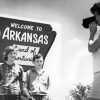
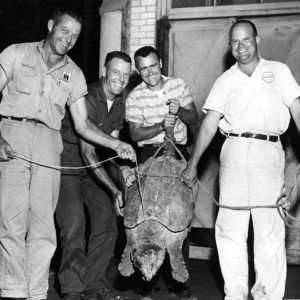 Alligator Snapping Turtle
Alligator Snapping Turtle 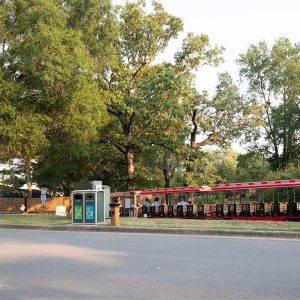 Diamond Express
Diamond Express 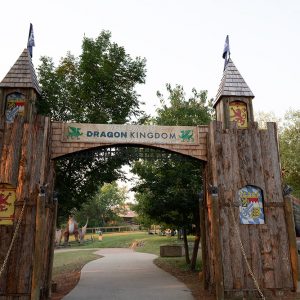 Dragon Kingdom Entrance
Dragon Kingdom Entrance 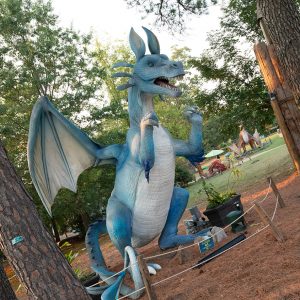 Dragon Kingdom Exhibit
Dragon Kingdom Exhibit 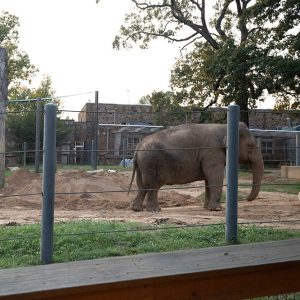 Elephant Habitat
Elephant Habitat 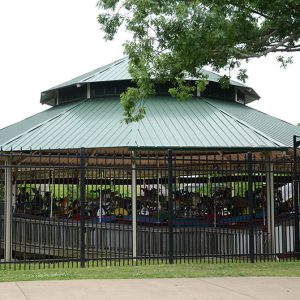 Herschell-Spillman Carousel
Herschell-Spillman Carousel 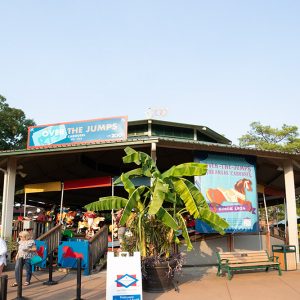 Herschell-Spillman Carousel
Herschell-Spillman Carousel 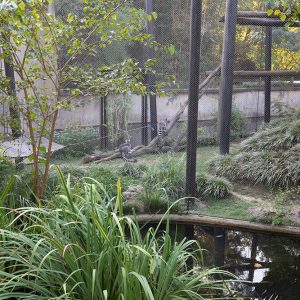 Lemur Habitat
Lemur Habitat 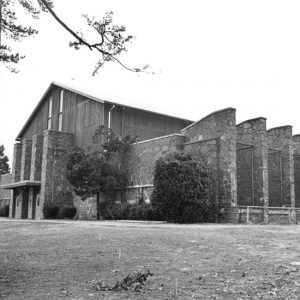 Little Rock Zoo
Little Rock Zoo  Little Rock Zoo [Video]
Little Rock Zoo [Video]  Little Rock Zoo Train
Little Rock Zoo Train  Little Rock Zoo Camel Rides
Little Rock Zoo Camel Rides  Little Rock Zoo City Ordinance
Little Rock Zoo City Ordinance 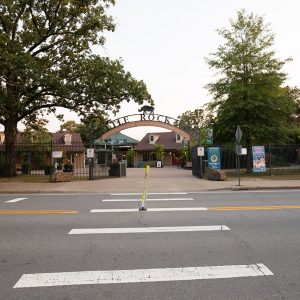 Little Rock Zoo Entrance
Little Rock Zoo Entrance 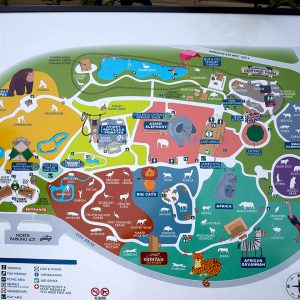 Little Rock Zoo Map
Little Rock Zoo Map 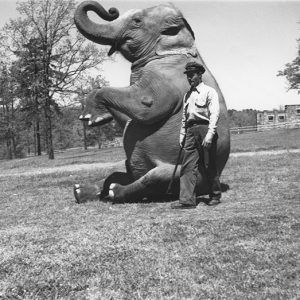 Ruth the Elephant
Ruth the Elephant 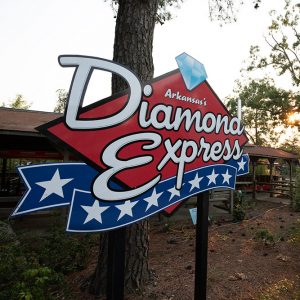 Train Entrance
Train Entrance 



Editor’s note: The Bylander narratives are oral history narratives told by Edgar Gerhardt Bylander and transcribed by his grand-niece Lisa Bylander. They were submitted by Jerry Bylander–nephew to Edgar G. Bylander–on behalf of the Bylander family. Jerry’s grandfather, Ernest G. Bylander, came to Little Rock from Sedalia, Missouri, to be secretary of the Arkansas State Fair at Fair Park (later War Memorial Park) in the 1920s. The Little Rock Zoo emerged on the site in the late 1920s. In essence, the zoo started “in the Bylanders’ backyard.”
When they started the excavation for the Travelers Field footings, my brother Ed was working for Ray Winder, who was the manager, and Roy Thompson of the Democrat P&L, who was president of the association. Ed drove one of the two track-laying tractors they used to dig in the heavy red clay, and I don’t remember if it was him who stuck the big Monarch in the gummy clay or someone else. The Monarch was a tremendous machine, but it wouldn’t pull the hat off your head. They got a couple of Holt Caterpillars and with all three tractors pulling, finally managed to get the Monarch out of the hole. As Travelers Field was put on the southwest corner of the State Hospital grounds, the patients got in free. I remember seeing them lined up after most of the paying customers had gone in and then the attendants led the patients to their seats. Another thing I remember was when one of the older Hinkson boys climbed on to the first limb of a tall pine tree just outside the ball park to watch the game, but slipped and fell out of the tree. Didn’t hurt him much, but it broke the collarbone of the fellow he fell on.
I was a teenager in Little Rock in the 1950s. One of my best memories was going to the zoo. I loved Ruth the elephant. She would be staked out on a huge chain, and we could walk up to her and pet her. The zoo hosted a birthday party for her each year and the baking company (I think it was Hostess) would bake her a huge cake and would give the children cupcakes. I always looked forward to that. I lived close enough to the zoo that I was awakened by the lions roaring every morning, which has always been a good memory. I LOVED going to the zoo. I must make plans to revisit it before I get too old to walk. My maiden name was Jeanette Turner.
It is interesting to note that when the University of Arkansas Razorbacks football team tried to find a razorback mascot, they had to go to the swamps of Louisiana to find Tusker. The Little Rock Zoo never had a real razorback tusker, even though the Finkbinder brothers gave the zoo several young shoats from time to time which were supposed to grow up to be tuskers.
Harvey Couch, president of Arkansas Power and Light, had a home on large acreage on Lake Catherine, near Hot Springs. He had deer and several wild animals, but he wanted a pair of buffalo. He bought three buffalo in Oklahoma. He gave some of these animals to the zoo, and they got the Arkansas State Highway Dept. to send a truck for them. The zoo kept the buffalo in a pen with a goat. Mr. Adams (whom the Little Rock Airport is named for) owned a wholesale produce company, and he, along with other wholesale firms, would give us old vegetables and fruit, and I would haul it in the state fair’s Model T Ford touring car. I would feed the old peaches to the goat. One time we got a load of peaches that had gotten over-ripe, and we threw them in the buffalo-elk-goat pen for the goats to eat. One of the buffaloes ate some of the spoiled peaches and died–when he was cut open for an autopsy, his stomach was full of peach pits. They had the head mounted and gave it to Dad [Ernest G. Bylander]. I dont know where it ended up.
It was hard to keep ducks and geese in the early days-people would bring their Easter egg-dyed chicks to the zoo when they had become too large to keep in their homes and turn them loose on the zoo duck pond. But, every winter, the carnival that came to Fair Park to stay for the winter would leave some of the carnival roustabouts to care for their animals, and some of the roustabouts who had no money to get out of town would sleep in with the animals and get food wherever they could. Eventually they would drift off somewhere else, then show up again in the spring to go out with the carnival. Every once in a while we would find ducks and geese missing, so the zoo personnel would search the brush in the creek bottom until they saw the smoke of a campfire and they would find one or more of the roustabouts roasting a goose or duck over their campfire. Having the sheriff give them 24 hours to be over the county line took care of the situation.
During the worst part of the Depression, probably in 1931 or 1932, we received word that a small circus had gone broke somewhere in Texas and that they had a performing elephant and other animals that could be bought. Plans were made to raise funds for the purchase, and the schoolchildren brought their pennies to school for the collection. The elephant’s name was Ruth, and contrary to many reports, the name was not changed to Ruth after she was brought to the zoo. Bill Sprott and Bill Beckett went to Texas to get the elephant and came back with Ruth, a camel, and a truckload of gear, including something for people to ride in on Ruth’s back. Ruth was chained in a fenced enclosure in the center of the cat house for about a year, then the WPA-built concession stand was remodeled into an elephant house. Bill Beckett worked Ruth on Sunday afternoons; she had learned her circus tricks from the former owners before she was brought from Texas. Ruth wasn’t worked then from the time Bill Beckett quit the zoo until some years later when Raymond Squires started working her again, doing the same tricks she had done in the circus.
There was a cougar, panther, or mountain lion, or whatever you want to call it, that was donated to the zoo by a woman from a small town in south Arkansas. She had raised the cat from when it was cub and it was a wonderful pet, always knowing to pull its claws back into its toes when playing with a human. However, as it got bigger, it scared people in the small town where this woman lived, and she reluctantly brought it to the zoo. She would come to see the cat from time to time, always arriving after zoo closing hours, and Bill Sprott would go with her into the walkway behind the big cats cages and let her into the cougars cage. She would get in the cage and the cougar would rest its head in her lap while she petted it, or they would wrestle and roughhouse together.
I remember an unusual way we once obtained some Canada geese for the zoo. One year, we had a very early fall, and the amusement rides section of the park, which was owned by Keenan, Hemphill and McQuilken of Oklahoma City, had yet to shut down when the fall rains and fog started coming in. One night during this early fall, the weather had turned chilly and fog started rolling in just after sundown. By ten o-clock it was so thick that the ride operators-Barney Conley, Heinie Reager, Fats Boosey, Howard Simpson, Archie Gray, Little Howard Scoggins, myself-and the concessionaires (Fred, Skinny, and Bert Miller) were ready to close down for the night. While we were wandering around talking among ourselves due to lack of customers, a flight of Canadian honkers, apparently trapped in the fog and looking for a place to let down, became confused by the lights on the roller coaster. We could hear the geese circling around somewhere above the lights, calling loudly to each other. We drifted in groups over to the area between the merry-go-round and the roller coaster. Almost as if a signal were given, the geese began coming in lower. As they did, the inevitable happened-some of them hit the uprights and braces of the roller coaster and were either injured or killed. We took the injured geese to the zoo to be nursed back to health and ate the rest. I think this was probably against the Fish and Game Department regulations, but I don-t think it bothered anyone much.
Little Rock mayor Ben D. Brickhouse gave Dad [Ernest G. Bylander] a pet wolf. We kept it in the backyard with our other animals. That started the zoo. Mr. Gray, our night watchman and maintenance man, had been a farmer so they made him the first zookeeper. The stone zoo building was built by the WPA during the Depression. They also built a bear pit. It had stone sides with curved steel bars protruding about three feet above the wall. The pit had a fence down the middle with a gateone side for brown bears and one for black bears. One bear was donated by Johnny Harding. His father was superintendent of Little Rock schools. He had raised it from a cub, but it had grown up and had clawed up the leather upholstery in the backseat of his Stutz touring car. A plumbing company donated five rhesus monkeys. A lot of people brought in snakes, owls, and other animals.